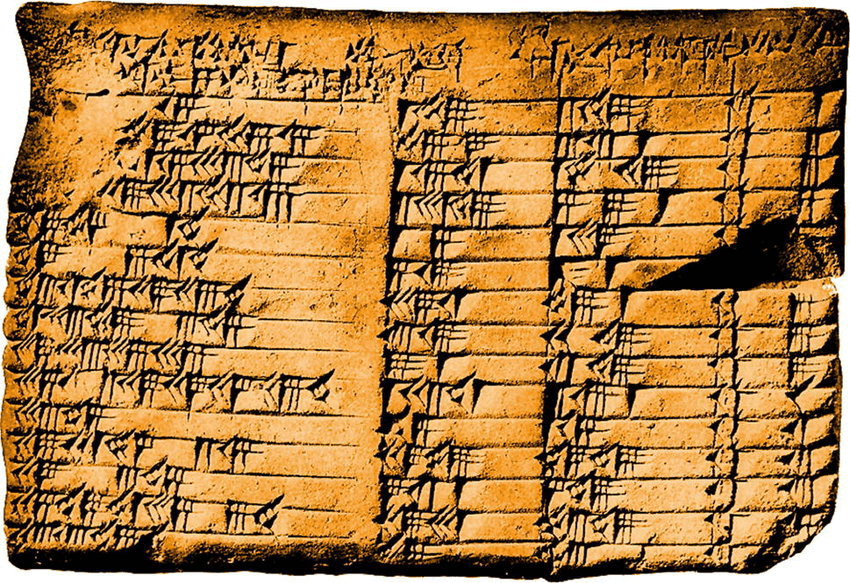In the intricate tapestry of human history, the concept of numbers stands as a fundamental pillar that has shaped the way we perceive and interact with the world. The journey to inventing numbers was not a solitary path; instead, it emerged independently across diverse ancient civilizations, each weaving its own unique numerical tapestry.
Babylonian Numerals: Foundations in Mesopotamia
Mathematical cuneiform tablet with four columns and fifteen rows of numbers. Larsa, Mesopotamia (modern Tell Senkereh, Iraq), circa 1820–1762 BC.
Around 2000 BC, in the fertile lands of Mesopotamia (modern-day Iraq), the Babylonians were laying the foundations of numerical systems. Their base-60 numerical system left an indelible mark on human culture. This system, influenced by the cycles of the moon and their calculations of time, paved the way for the divisions of time we use today. Their ingenious combination of symbols and positional notation enabled the representation of a wide range of numbers and remains a testament to ancient mathematical creativity.
Egyptian Numerals: Hieroglyphic Representations
1,333,330 in Egyptian hieroglyphs from the Edfu Temple (237–57 BC) in Egypt.
The hieroglyph on the left is the Egyptian god Heh (chaos or infinity), representing one million. Next, a tadpole hieroglyph represents 100,000. The bent finger hieroglyph is 10,000; the lotus flower is 1000; the coil of rope is 100; and the hobble (used for cattle and missing the crossbar) is 10. Reading from left to right, the hieroglyph number is 1,333,330. The one missing numeric hieroglyph symbol in the photo is the stroke or tally mark for 1.
Contemporary with the Babylonians, the ancient Egyptians developed their own numerical system. Rooted in a base-10 system, the Egyptians created symbols to represent multiples of powers of 10. This unique numerical system, while not possessing the concept of zero, exemplified the practical nature of ancient mathematics. The legacy of their numerical prowess lives on in the grand structures they built, which bear witness to their advanced mathematical understanding.
Indus Valley Civilization: Traces of Early Numerical Notation
Indus Valley Civilization: Traces of Early Numerical Notation
During the period of 3300–1300 BC, the enigmatic Indus Valley Civilization played a role in the earliest development of numerical notation. While the specifics of their system remain elusive, their contributions paved the way for the numerical innovations that followed.
Hindu-Arabic Numerals: India's Gift to the World
The first Brahmi numerals, ancestors of Hindu-Arabic numerals, used by Ashoka in his Edicts of Ashoka c. 250 BC
Around the 6th to 9th centuries AD, in the cultural crucible of India, a revolutionary leap was made with the introduction of the Hindu-Arabic numeral system. A base-10 system with the inclusion of zero as a placeholder, this innovation transformed the landscape of mathematics and commerce. The adoption of zero allowed for more efficient calculations and laid the groundwork for the intricate mathematical tapestries woven by future generations.
Each of these ancient civilizations crafted its own numerical story, contributing threads that continue to shape our mathematical understanding today. The diversity of these systems, emerging independently across the globe, highlights the universality of human curiosity and the ingenuity with which we have sought to quantify and comprehend our surroundings.
As we traverse through history, it becomes evident that the invention of numbers was not a linear progression but a mosaic of innovation. From Babylon's base-60 system to India's gift of zero, the ancient civilizations have given us a legacy that continues to influence the very foundations of our modern world. In celebrating these origins, we honor the diverse tapestry of human intellect and the quest for knowledge that unites us across time and space.










